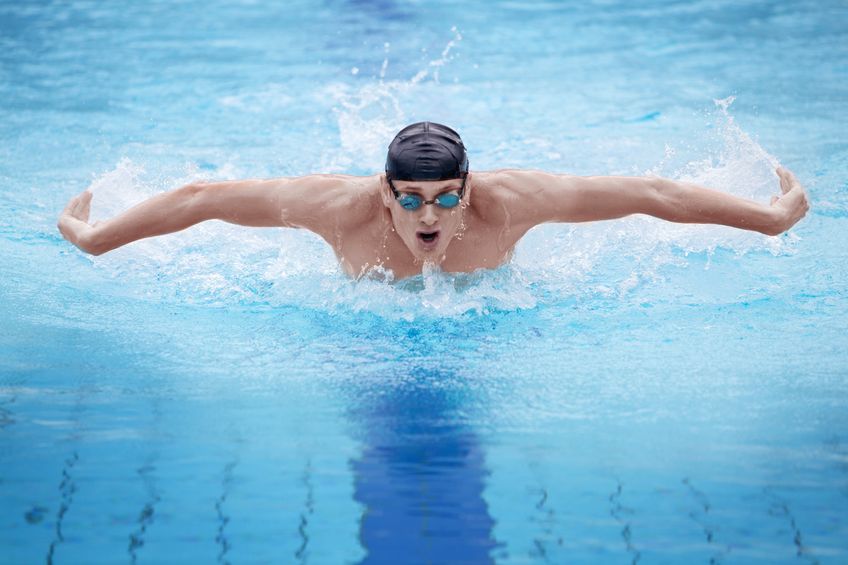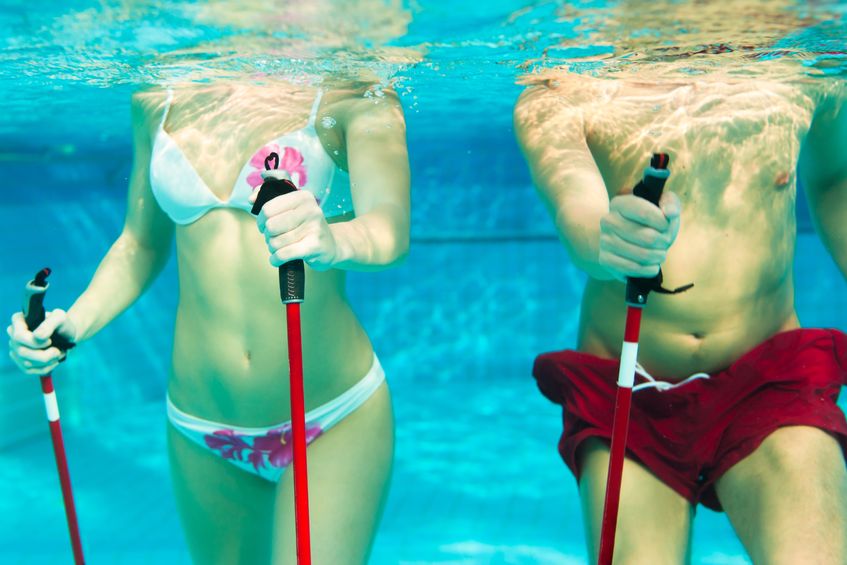Water Workout
Water Workout Fitness Ideas
by ACE Physical Therapy and Sports Medicine Institute
Tips for a Water Workout.
- Get a clearance from your doctor prior to beginning any exercise routine.
- Expect some muscle soreness following the first couple times that you perform your water workout.
- Perform arm and leg exercises in the water at the same time and burn more calories.
- If you develop a painful body part following your workouts, put ice on it for 15-20 minutes several times per day.
- Your Physical Therapist can help you develop a well-rounded, full body water workout.
When the temperatures warm up, it’s a perfect time to cool down in the water. “Beat the heat” with a well-rounded, full-body water workout. Exercise every muscle in your body and build your cardiovascular fitness as well through the following regimen. Like land-based routines, the water workout must be performed 3-4x per week to be truly effective. It can be your entire routine or be used as an optional portion of your land-based program.
Swimming
Swimming is the ideal all-round exercise. Some consider it to be “one of the best possible workout activities. Since it is low impact, almost anyone can do it. People with damaged or injured shoulders may have to take certain precautions but even they can swim by modifying their swim stroke and avoiding the “over-head” position of the arm. Swimming makes a great water workout because “every muscle in your body” is used as you pull and kick with your arms and legs.
Swimming also burns calories. The amount of calories burned is dependent on your body weight and the intensity of the swim. Some people can lose between 500-800 calories during a moderate intensity swim that lasts approximately 1 hour. Swimming is great for your cardiovascular system because your heart rate will be elevated to 60 – 70% of your maximum heart rate (220-your age x .60 or .70) and this has been shown to increase cardiovascular fitness.
Water Walking
Walking in water provides resistance and great benefits to the body. For people suffering from arthritic joints in their hips, knees and ankles water walking is a great way to exercise the lower body.
You can try different ways of walking. Obviously, straight-ahead walking is the common, but you also might enjoy (and find it easier) walking in a side ways shuffle or even backwards. As you move into deeper water (chest high is preferred), the body must “work” against the resistance of the water. At the same time, due to the buoyancy effect of water the joints are not subjected to the impact forces that occur while on land. If someone is rehabilitating a lower extremity injury the Physical Therapist suggest numerous exercises to perform in the water, but the first one will be walking in a straight line in waist to chest high water.
Water Jogging/Running
Want to get an intense water workout? Try jogging or running in the water. This can be extremely difficult and the deeper the water the more intense the workout will be. If you jog in shallow water, you have to “lift” your feet out of the water, and this requires a lot more hip flexion and energy. Some people cannot jog on land but by wearing a floatation belt, they can run in water that is deep enough to prevent their feet to touch the bottom.
Arm Swings
Arm exercises are perfect for a water workout due once again to the resistance of movement caused by water. As you swing your arms faster and more aggressively, you experience greater resistance, working the muscles of the chest, arms and back. You should stand in water that is deep enough to fully submerge yourr arms (preferably up to shoulder level). Here are four different movements for the waist and above. You should perform 3 sets of 15.
(1) Start with the arms resting along the sides of your body. With the palm facing upward, move your hands forcefully up to shoulder level.
(2) When your hands reach shoulder level, pause and turn the palms facing downward and move the arms back to the beginning position.
(3) Begin with your arms raised to shoulder level and out to the side. Turn your hands so the palms will be facing each other when the arms are moved to front of your body. This motion is similar to the “fly” exercise in the gym, move your arms so your palms can come together and “clap” your hands.
(4) Pause, don’t change your hand position and forcefully return your arms to the beginning position which is shoulder level and out to the side.
Kicks
Stand in waist deep water. Maintain a straight knee at all times and start to kick directly in front of you up to the surface of the water. At the surface, pause and rapidly return your leg to the starting position. After 3 sets of 15 repetitions of each direction, you are ready for the second phase of the leg routine. From the starting position, kick your leg out to the side as high as it will go. Be sure to keep your torso upright. You should not lean away from the way you are kicking your leg. At the top part of the side kick, pause and then rapidly move the leg back to the starting position.
Jumps
Lastly, a great way to incorporate strength building and cardiovascular exercise into the same activity is to perform a jumping routine. In chest deep water or slightly more shallow, begin by jumping straight up and down. For strength, do a series of “power” jumps. Jump as high out of the water as possible and do it 10x with a short rest in between each jump. For a cardiovascular routine, perform 10 jumps in succession with no rest stop in between jumps. The jumping routine can be performed in 3 sets of 10 repetitions.
A water workout is not only fun but effective. Your ability to perform exercises that are impossible on land due to the impact forces of gravity will enable you to do a program that encompasses the entire body and can improve your strength, endurance and cardiovascular fitness.
Read more articles on our main website blog at: ACE-pt.org/blog
Vist our main website at www.ACE-pt.org


